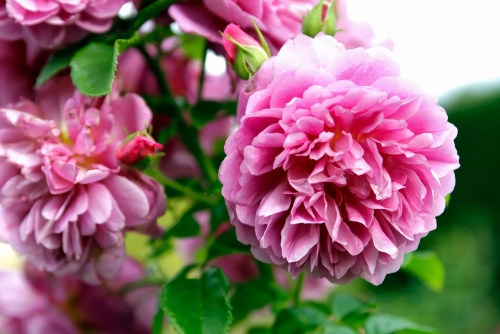From the Indian state of Arunachal Pradesh in the east to Kashmir in the west, the Himalayas encircle much of northern India. Several trekking routes that surround the base of Kanchenjunga, the third-tallest mountain in the world, are well known in Sikkim, in eastern India. The majority of the population in Sikkim is Buddhist, and it is one of the wettest regions in the Himalayas. The central Indian Himalayas, which comprise the states of Himachal Pradesh and Uttarakhand, are known for their high Himalayan trekking routes, many of which are also Hindu pilgrimages.
When the rest of the Himalaya is suffering monsoon rain, Ladakh in the west offers good trekking alternatives because it is one of the driest parts of the mountain range. The westernmost Himalayan region of Kashmir has been referred to as "heaven on earth" for its breathtaking alpine meadows and towering pine forests, though the beauty is occasionally overshadowed by security concerns.
Goecha La Trek
The eight-day Goecha La trek is located in the Sikkim region of eastern India. Due to its proximity to the Bay of Bengal and direct line of the Indian Monsoon, this region of the Himalayas is among the wettest. A sometimes wet track leads through dense rain woods at first, and as you continue on, the lowland forest eventually gives way to gorgeous rhododendron forests, which are in full flower in early May. The first vantage spots are at Dzongri Top, where you can see Mount Pandim and Kangchenjunga. Many people stop in Dzongri, but it's worthwhile to continue on to the sacred Samiti Lake, whose clear waters feed the Prek River. For those attempting to scale Kanchenjunga's southeast face, Goecha La (16,000 ft/4876 m) itself serves as a basecamp.
Gangotri Glacier Trek
You can reach the Ganges River's source on this six-day and longer walk (pilgrimage). The 18-kilometer trip begins at the end of the road close to the pilgrimage site of Gangotri and goes to Gomukh, which is thought to be the Ganges' source at the foot of the glacier. With views of Mount Shivling and the Bhagirathi mountain range, the surroundings are breathtaking. Beautiful peaks and one of the biggest glaciers in the central Himalaya may be seen on this fantastic journey.
Frozen River Trek
Along the frozen Zanskar River, an ancient route The settlements of the Zanskar Valley are linked to the village of Chilling, which is located on the road to Leh, by this six-day walk (Ladakh, India). The greatest time to go on this walk is in late January or early February when the weather is the coldest and you can utilise the frozen river as a trail. If you can face the average daytime temperature of -10 C and nighttime lows of -20 to -25 C, the walk is magnificent and lovely. Where the river is not completely frozen over and a new path needs to be forged over the snow-covered banks, the journey can be challenging. It is undoubtedly a once-in-a-lifetime opportunity.
Markha Valley
One of the most well-known and convenient treks in Ladakh, India, is the Markha Valley walk, which lasts six to eight days. Additionally, trekkers have the option of ascending Stok Kangri (6,153 m). Since the summit can be reached quite quickly, this peak requires trekking, thus one must take care to fully acclimatise. The actual journey follows the banks of the beautiful Markha River valley and includes crossing three passes: Stok La (4848 m), Kongmaru La (5274 m), and Gandla (4878 m). One of the attractions is camping close to the foot of Kang-Yutze peak and experiencing Tibetan culture.
Kolahoi Glacier Trek
With its stunning mountain meadows and imposing pine trees, trekking in Kashmir is unlike anywhere else in the Himalayas, and the region has frequently been likened to Switzerland's Alps. Easy to get from Srinigar, the three-day trek up Lidder Valley to Kolahoi Glacier is a wonderful choice for a first trip in Kashmir. The trail follows the Lidder River's course and provides sweeping views of the nearby snow-capped peaks and wildflower-filled meadows. The Gujjars, a nomadic group who have herded sheep in the area for millennia, live in the canyon during the summer. You will be rewarded with stunning views of the Kolahoi Glacier if you make it all the way to the valley's top.





 Treks in India
Treks in India






